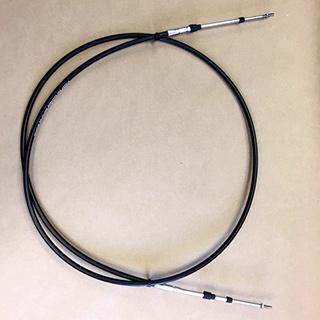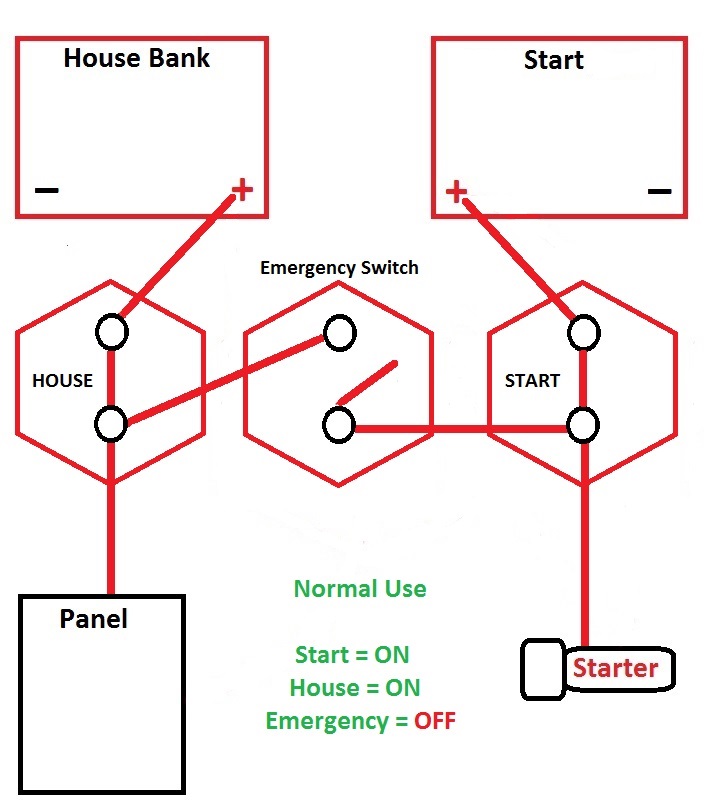We purchased a DS 41 last year in September, sailed her some 500 Nm's to the home port and shortly after put her up for the winter. During the off season I have been studying the manuals and going over the boat attempting to familiarize myself with every nuance of the vessel, I am currently in the middle of a project replacing the batteries as the originals were tired out, while doing this I have arrived at a question as to how do I start this boat when the starter bat is dead?
There are (2) on/off switches for house and starter bat, in the panel that houses these switches and various circuit breakers there is a solenoid (like a starter solenoid) that appears to join the house and starter bat's with each side of this solenoid protected by a 150 amp breaker. There are (4) wires on the solenoid - (2) 2/0 on each side of the solenoid and then (2) 16 ga wires which control the solenoids closure, what I can't figure out is what activates the control wires? (yellow and yellow/red tracer) Hunters wiring diagrams in the manuals are basically branch drawings for cable lengths and give absolutely no hint as the where the control wires go?
The manual states, "When the starter battery is dead the motor may be started with the house batteries"? and that is it? so how does one go about this? does it happen automatically? there is no obvious way to do this and there is no instruction in the manual that I can find, so I ask you, do you know how this happens? your input is appreciated.
Mark
There are (2) on/off switches for house and starter bat, in the panel that houses these switches and various circuit breakers there is a solenoid (like a starter solenoid) that appears to join the house and starter bat's with each side of this solenoid protected by a 150 amp breaker. There are (4) wires on the solenoid - (2) 2/0 on each side of the solenoid and then (2) 16 ga wires which control the solenoids closure, what I can't figure out is what activates the control wires? (yellow and yellow/red tracer) Hunters wiring diagrams in the manuals are basically branch drawings for cable lengths and give absolutely no hint as the where the control wires go?
The manual states, "When the starter battery is dead the motor may be started with the house batteries"? and that is it? so how does one go about this? does it happen automatically? there is no obvious way to do this and there is no instruction in the manual that I can find, so I ask you, do you know how this happens? your input is appreciated.
Mark



